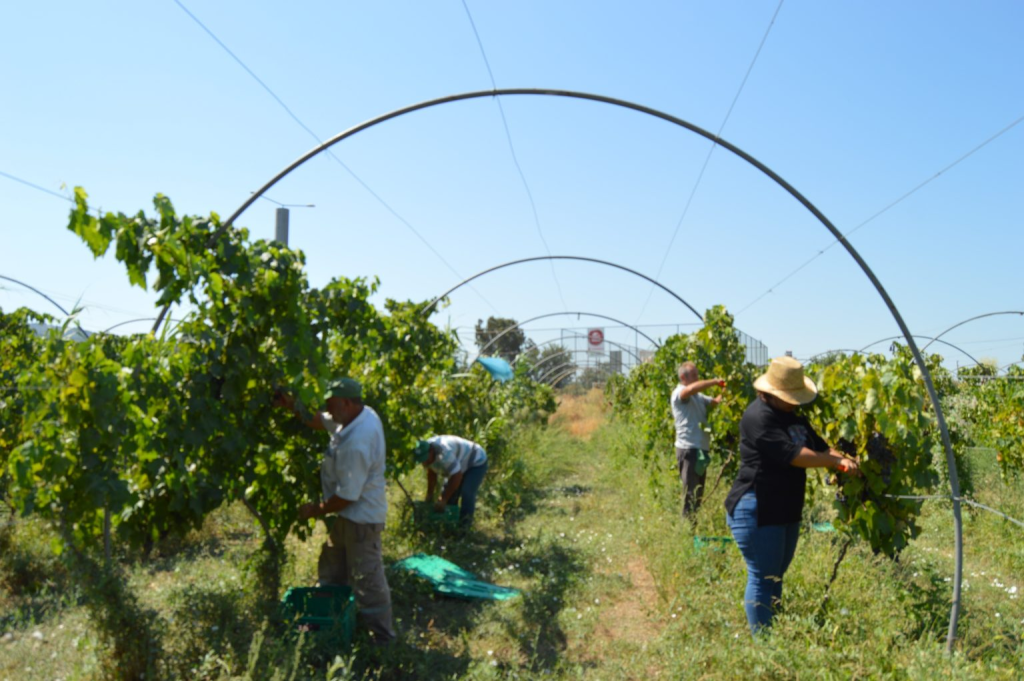
High-system viticulture, a method adopted worldwide today, provides a significant increase in yield compared to ground-level viticulture and has been scientifically proven to have positive effects on quality.
Project Objective
The main goal of this project is to increase productivity through pergola-system viticulture trials. The project aims to:
- Make better use of sunlight in cool and humid regions,
- Improve air circulation, and
- Protect young shoots and grape clusters from the sun’s harmful effects in very hot regions, thereby increasing crop yield.
Implemented Work
Within the scope of the project:
- Saplings of Trakya İlkeren, Hatun Parmağı, and Crimson Seedless varieties were tested.
- A total of 569 trees were planted across a 3-decare area.
Devices and Technologies Used
- Digital Pheromone Trap: Detects pest presence early, monitors populations, and determines the appropriate intervention period according to the economic damage threshold, thereby increasing yield and quality.
- Early Warning System: Using parameters such as soil moisture, active temperature sum, and leaf wetness duration, spraying times are determined to ensure the correct pesticide is applied at the right time, improving yield and quality while reducing unnecessary costs.
- Drip Irrigation System: Provides irrigation without stressing the plants using less water. Operating at low pressure reduces energy needs. Compared to dry cultivation, irrigation in grapevines using this system increases yield and quality by up to 60%.
Results
The project successfully facilitated essential operations such as soil preparation, irrigation, fertilization, pest and disease control, pruning, and harvesting.
Thanks to the pergola system and the technologies provided by TABİT, positive results in viticulture productivity were achieved.
